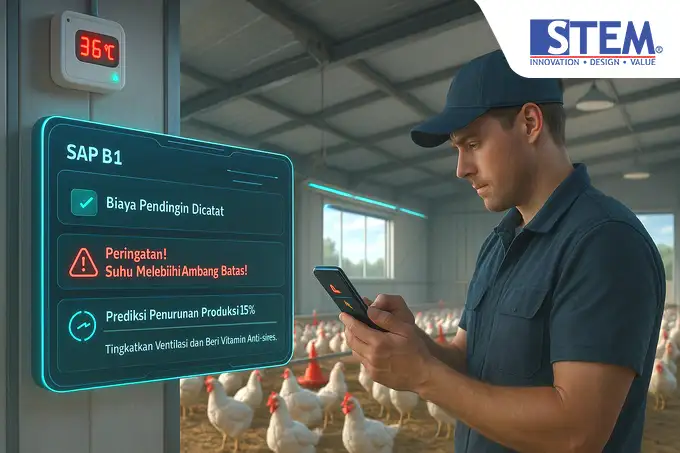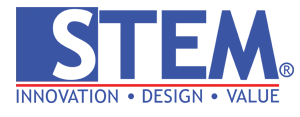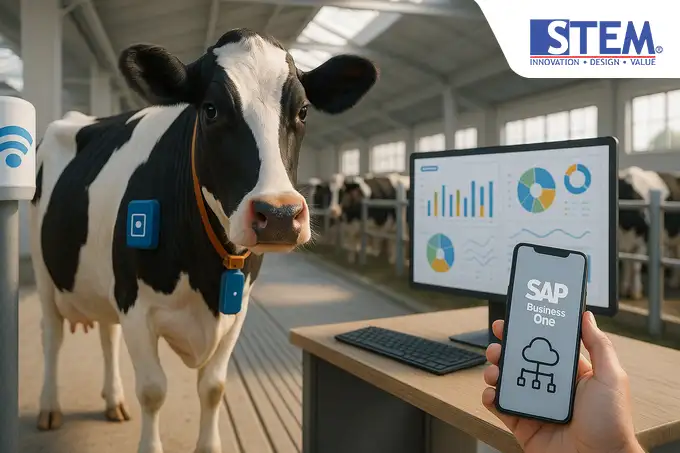When we talk about livestock farming in Indonesia, a myriad of challenges emerges, hindering the growth and scalability of this vital industry. Small to medium-scale farmers often struggle with fundamental tasks — determining whether their cattle are healthy, identifying the optimal feeding times, or even calculating the exact cost of a production cycle.
Everything is done manually — from scribbled notes to guesswork and gut feelings. The consequences? Feed stock mysteriously disappears, livestock illnesses are only discovered when already severe, and profit and loss assessments can only be made at month’s end — often too late to act.
This is precisely where technology enters the scene. With the right approach, we can revolutionize livestock management. The Internet of Things (IoT) can serve as the eyes and ears on the ground, while SAP Business One functions as the brain — a central command hub that synthesizes data from barn to balance sheet.
In this article, we’ll explore:
- The common challenges faced by livestock farmers
- Technology-based solutions: IoT and SAP B1
- How the two systems integrate and operate
- Steps toward digital transformation
- The role of PT. Sterling Tulus Cemerlang as your implementation partner
Key Challenges in Modern Livestock Farming
Let us dissect the recurring obstacles frequently encountered by livestock farmers:
- Limited Health and Reproductive Monitoring: Often, farmers only recognize illness in their animals once symptoms become critical. There’s a lack of consistent, measurable data like body temperature, daily activity, or reproductive cycles.
- Inaccurate Feed and Medicine Inventory: Feed supplies can suddenly run out due to the absence of real-time tracking systems.
- Manual Record-Keeping: Many still rely on notebooks or basic Excel spreadsheets. This invites data loss and requires cumbersome manual recalculations for analysis.
- Unclear Production Costs: It’s difficult to trace cost increases back to feed, medicine, or labor. Sales prices are often set without a comprehensive understanding of all cost components.
- Minimal Business Visibility: Business owners might know their livestock appear healthy but have no clear picture of daily productivity or overall profitability.
IoT in Livestock Farming — Turning Sensors into Your Eyes and Ears
What is IoT in livestock farming? In essence, it’s a network of sensors that capture real-world data — such as barn temperature, humidity, and animal movement — and transmit it automatically to a central system.
How it works:
- Sensors are installed in barns, on livestock bodies, in feed dispensers, etc.
- Data is sent via the internet to a central server or cloud platform.
- Monitoring platforms visualize the data in real-time dashboards.
Practical applications include:
- Livestock Health Monitoring: Temperature sensors and accelerometers detect fevers or reduced activity. Automatic alerts notify farmers of any abnormalities.
- Automated Feeding: Sensors and actuators regulate feeding schedules and portions based on the animal’s age and weight.
- Barn Environment Monitoring: Tracks temperature, humidity, and ammonia levels. If thresholds are exceeded, the system recommends automatic ventilation.
- Livestock Tracking: GPS or RFID tags monitor animal locations, crucial for open-range or semi-intensive systems.
SAP Business One — The Central Nervous System of Livestock Operations
SAP Business One is far more than an accounting tool — it’s a comprehensive ERP (Enterprise Resource Planning) system that interconnects all aspects of business operations, including livestock farming.
Key features for livestock businesses include:
- Stock & Inventory Management: Monitor feed, medicine, breeding stock, and livestock levels directly from the dashboard. Alerts are sent when stock runs low.
- Production Management: Automates the documentation of livestock cycles and outputs (milk, eggs, meat).
- Accounting & Finance: Automatically records all transactions and generates profit/loss statements, cash flow reports, and asset tracking.
- Purchasing & Sales: Streamlines procurement and sales workflows, with direct PO creation in the system.
- Reporting & Analytics: Real-time dashboards offer performance insights across livestock, production, and financial metrics.
IoT and SAP B1 — The Synergy of a Smart Farm

Imagine an IoT sensor in your barn detects a temperature spike to 36°C. SAP B1 receives this data and, recognizing it exceeds the acceptable limit, automatically:
- Logs additional cooling system costs
- Sends alerts to the farmer via a mobile app
- Predicts potential productivity drops due to animal stress
- Recommends preventive actions
This is the power of the IoT + SAP B1 synergy.
Benefits of Integration:
- Data-Driven Decisions: Combine physical and financial data to inform strategic actions.
- Process Automation: Automatic responses to anomalies reduce delays and minimize human error.
- End-to-End Visibility: From barn temperature to per-animal profitability — everything is trackable.
- Improved Efficiency and Profitability: Real-time insights translate to smarter, faster decisions.
📌 It’s Time to Embrace Smart Farming
Ready to digitally transform your livestock business? Explore integrated IoT Livestock Solutions paired with SAP Business One, delivered by seasoned experts.
👉 Contact PT. Sterling Tulus Cemerlang today for a free consultation
Challenges in Implementing IoT and SAP B1
Adopting technology is rarely straightforward, especially for industries steeped in tradition. Here are some common hurdles:
- Initial Costs: The investment in sensors, servers, and SAP B1 licenses can be substantial — but it’s a long-term gain.
- Connectivity Issues: Rural farms often face poor internet access.
- Technological Complexity: Farmers may need training to interpret dashboards and manage systems.
- Human Resources: Staff may require time and support to adapt.
- Vendor Selection: Choosing the wrong implementation partner can derail the entire initiative.
The solution? Partner with an experienced firm like PT. Sterling Tulus Cemerlang — they’ll support you from planning to full-scale deployment.
The Future of Indonesian Livestock — Digital, Sustainable, Competitive
Tomorrow’s livestock industry is no longer just about animals — it’s about data management, energy efficiency, and sustainability. Countries worldwide are already leveraging IoT, AI, and ERP systems to optimize production.
Indonesia must prepare. Even small-scale farmers can take the first step — install a simple barn temperature sensor or begin digital recordkeeping. What truly matters is the mindset: technology is not a threat, but a vital tool.
Conclusion: From Barn to Cloud
Digital transformation isn’t just a trend — it’s an imperative. With IoT in livestock farming, farmers gain real-time visibility into animal conditions. With SAP Business One, they can manage operations comprehensively and efficiently.
Together, they create Smart Farming — a modern livestock system that is productive, data-driven, and globally competitive.
📌 Start Your Consultation Today!
Digitalizing your farm doesn’t have to be complex.
PT. Sterling Tulus Cemerlang is ready to be your trusted partner in implementing IoT and SAP Business One tailored to your needs.
💬 Discuss your farm’s digital journey with us now!


